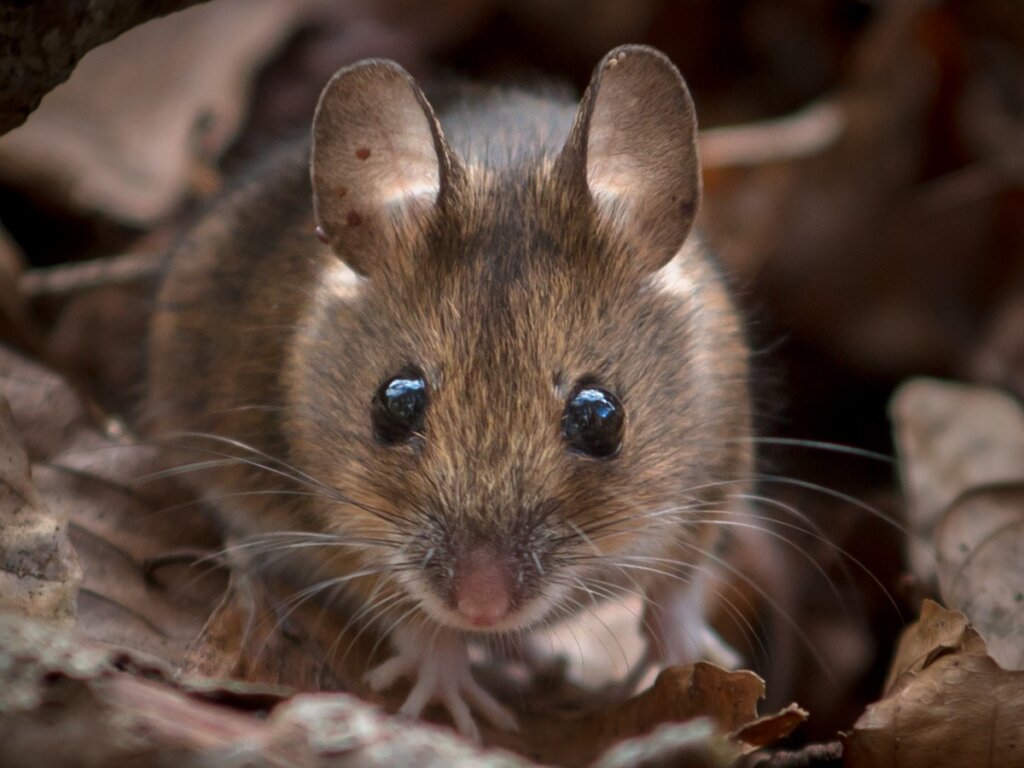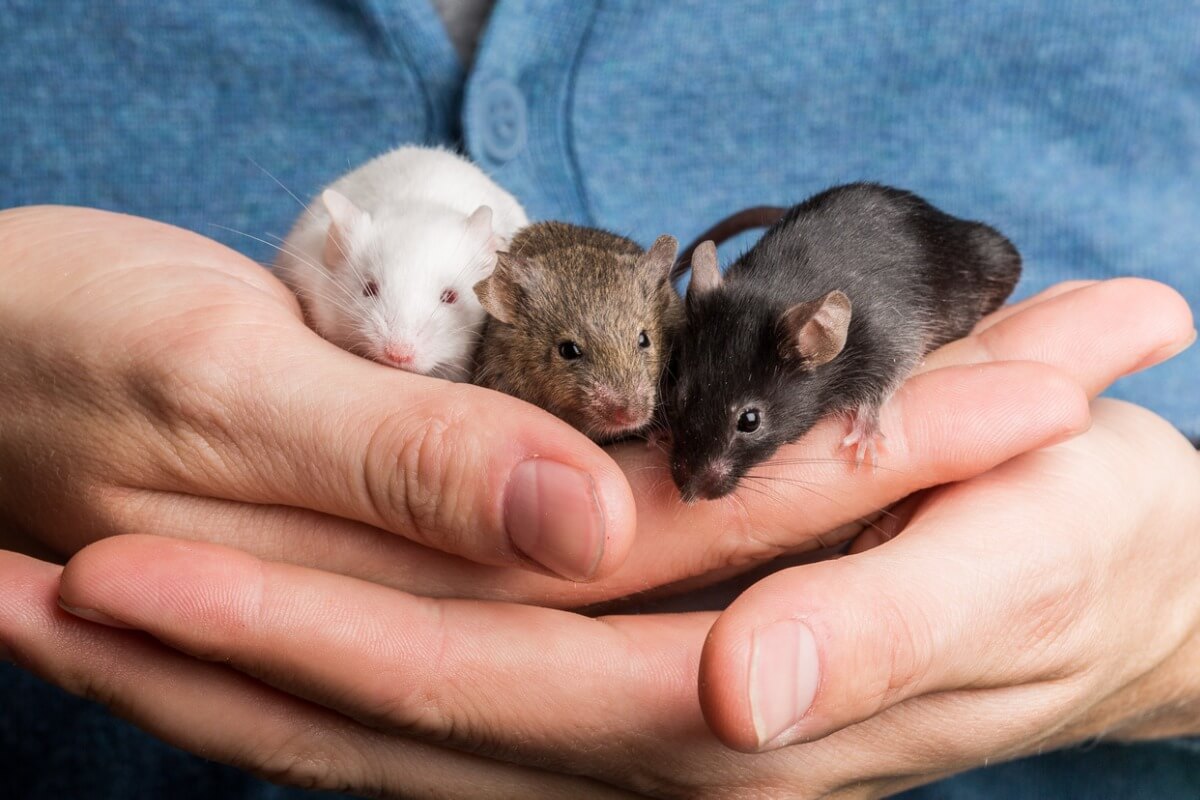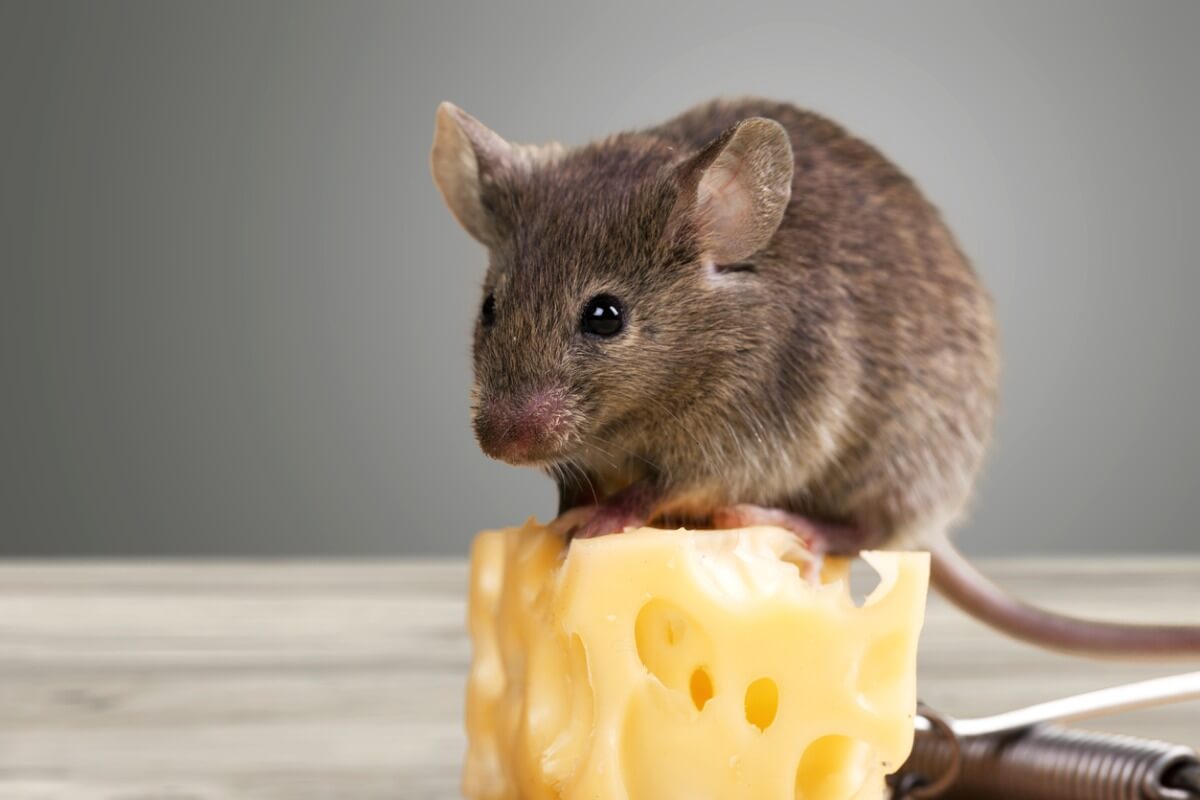5 Curiosities About Mice Teeth

Mice teeth can cause a certain amount of fear in humans. Their bite, although not dangerous or excessively painful, is capable of piercing the skin. That’s why many people are repulsed by these animals.
However, mice teeth are very interesting and we’re going to tell you all about them today. Even if you don’t like rodents, the first step to overcoming fear and repulsion is to be informed about how wonderful any living being can be. Let’s make a start!
5 curiosities about mice teeth

Mice belong to the Mus genus and the Muridae family. They’re viviparous mammals and the oldest fossils of this species date back to the Upper Miocene (about 23 million years ago). Even since then, their incredible adaptability and small size have played in their favor for survival. Their teeth are one of the most useful tools they possess, as you’ll see below.
1. Mice teeth are continuously growing
The teeth of these animals never stop growing, as the roots of their incisors and molars are open. In fact, they grow quite rapidly, about 1 to 2 millimeters per week.
Since many of the fruits included in their diet have a hard shell, rodents must be able to gnaw their way through them. If their teeth didn’t grow continuously, they would wear them down so much that they would completely disappear.
2. They are yellow
Although in humans it’s a sign of disease or lack of hygiene, yellow teeth are perfectly normal in rodents such as mice. This is due to their enamel, which contains iron oxides or hydroxides that oxidize on contact with air, giving this yellow or orange coloration, depending on the species.
If you live with a rodent or mouse, you should never bleach its teeth. This coloration is normal and their mouth isn’t dirty. If you apply these treatments you could seriously damage their health.
3. They don’t have premolars
No doubt you know that animals that don’t eat meat don’t have canines or fangs. Logically, this is the case with mice, as they feed on vegetables and fruits and their only source of animal protein is insects, but did you know that they don’t have premolars either?
It’s true that some rodent families have them, such as squirrels, but muroids have never had them throughout their natural history. Instead, their molars are capable of crushing the small pieces they chop up with their incisors.
The toothless space between the incisors and molars is known as a diastema.
4. If they grow more than they should it’s a serious problem
Sometimes, when they have an inadequate diet in captivity or suffer from a dental health problem, mice teeth grow more than they should. This can lead to a myriad of serious diseases, such as malocclusion or molar overgrowth.
Whenever you notice anything unusual about your mouse’s teeth, go to the veterinarian, as all these ailments cause great pain in the animal, in addition to the fact that they could prevent them from eating.
5. They can chew and gnaw
Although both terms may seem similar in colloquial language, the truth is that they are very different at a biological level. In general, existing rodent species have specialized in one of the two. Those that needed to go through shells, such as the squirrel, specialized in gnawing. Others, such as the guinea pig, feed primarily on plant fibers, so they chew rather than gnaw.
However, a study has found that rats and mice are able to perform both types of movements, gnawing and chewing. Their bite is much more efficient and allows them to vary their feeding greatly, favoring their opportunistic style.

As you can see, mice teeth hold a lot of secrets. It’s natural not to think too much about our teeth, but comparing different species can provide valuable information about their biology.
This information is very useful when it comes to providing care for animals that share their lives with us, as health measures derived from knowledge about our own species are often applied.
So, if you have a pet mouse, always make sure to consult a veterinarian whenever you feel something may be wrong with its health. And, above all, find out all you can about these fascinating animals!
All cited sources were thoroughly reviewed by our team to ensure their quality, reliability, currency, and validity. The bibliography of this article was considered reliable and of academic or scientific accuracy.
- Moya‐Costa, R., Bauluz, B., & Cuenca‐Bescós, G. (2019). Structure and composition of the incisor enamel of extant and fossil mammals with tooth pigmentation. Lethaia, 52(3), 370-388.
- Cox, P. G., Rayfield, E. J., Fagan, M. J., Herrel, A., Pataky, T. C., & Jeffery, N. (2012). Functional evolution of the feeding system in rodents. PLoS One, 7(4), e36299.
